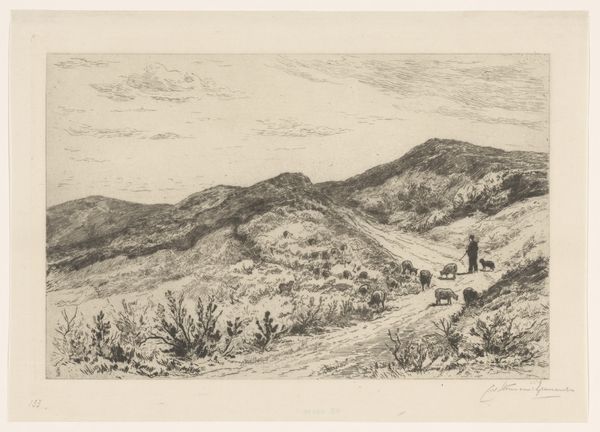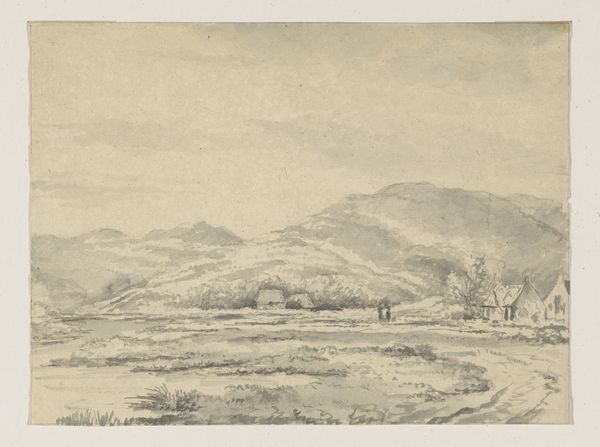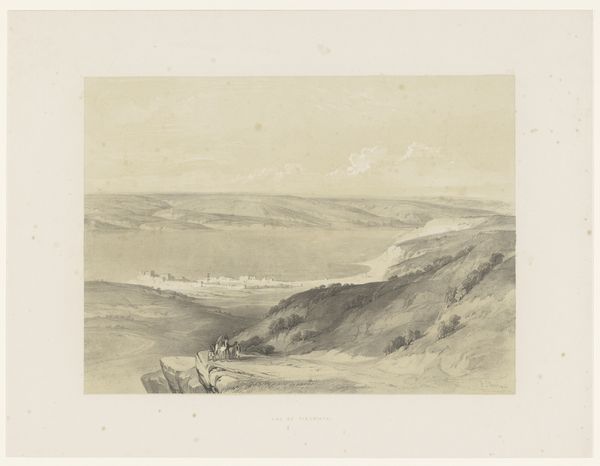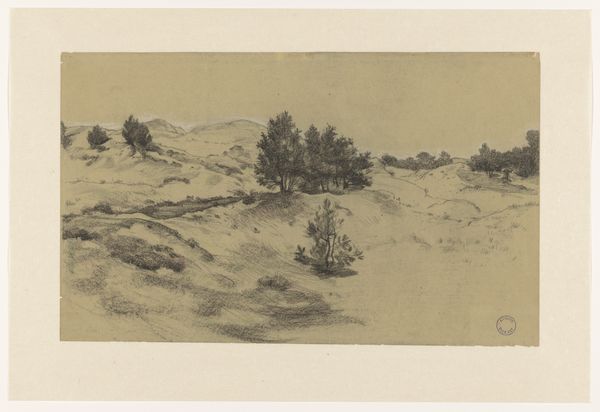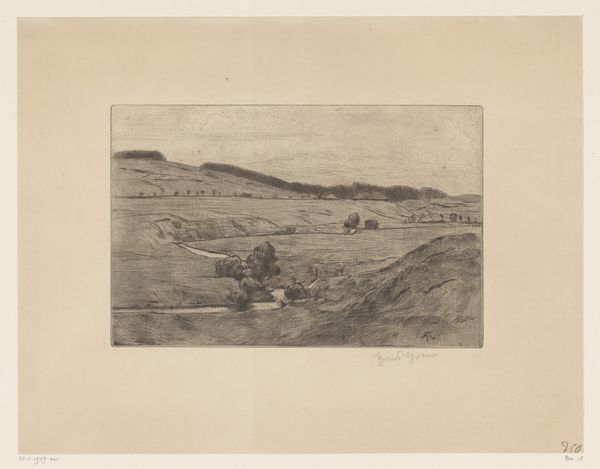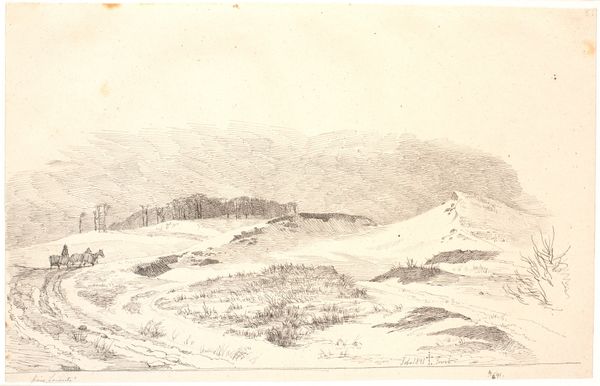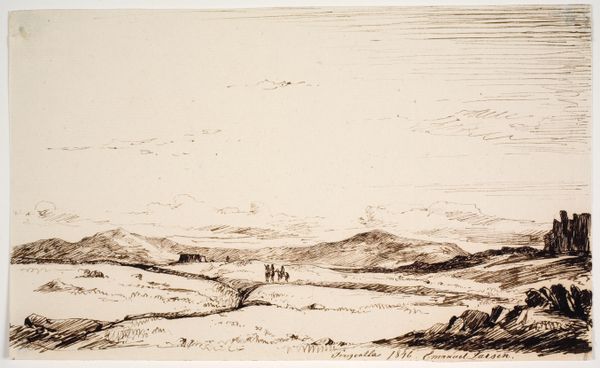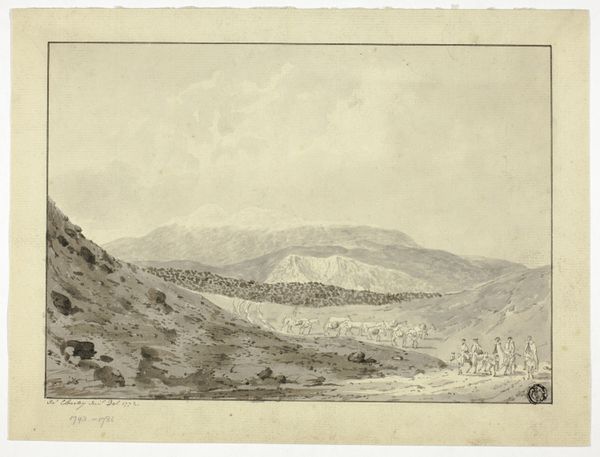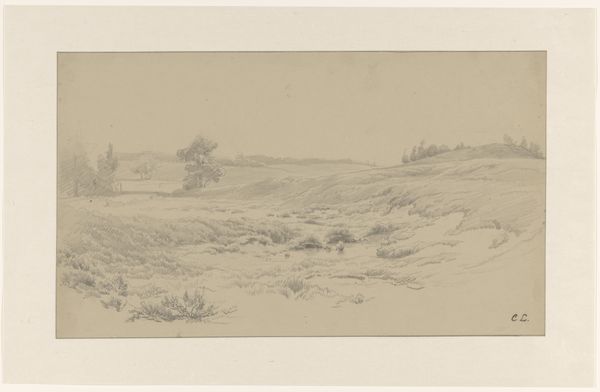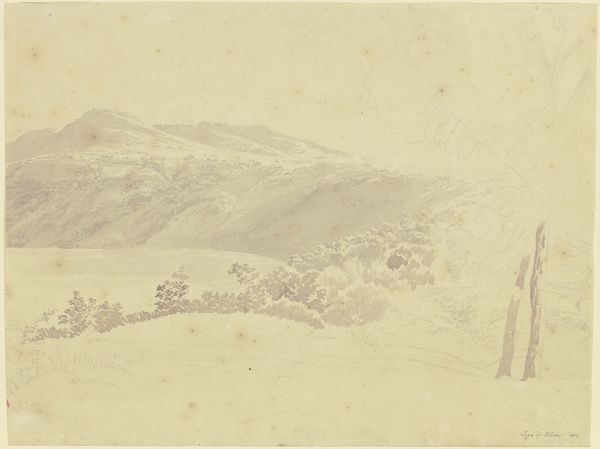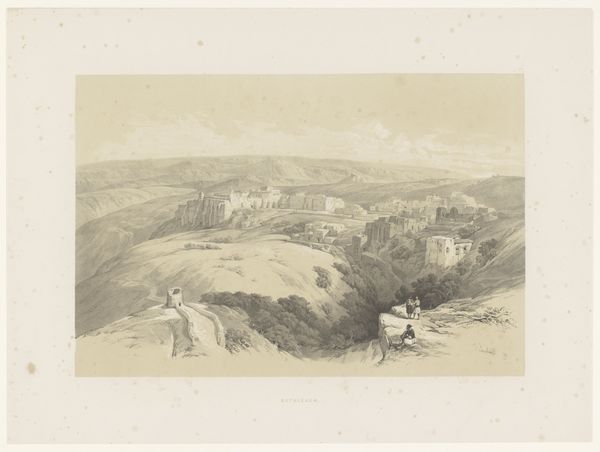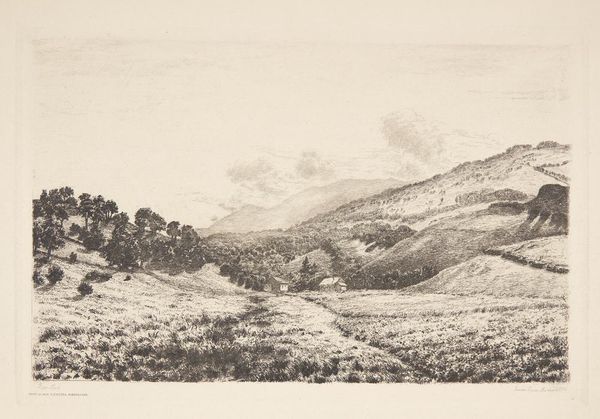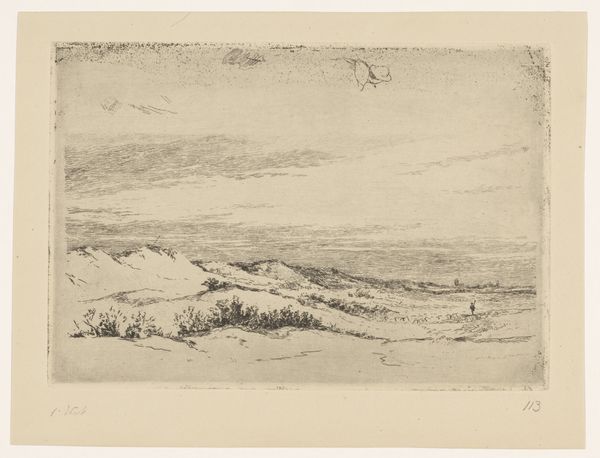
Heidelandschap met schaapskudde bij Worth-Rheden c. 1880
0:00
0:00
Dimensions: height 215 mm, width 311 mm
Copyright: Rijks Museum: Open Domain
Editor: This is "Heidelandschap met schaapskudde bij Worth-Rheden," or "Landscape with a Flock of Sheep near Worth-Rheden," created around 1880 by Carel Nicolaas Storm van 's-Gravesande. It’s an etching, which gives it this incredible detailed and almost dreamy quality. I’m struck by how the artist captured such a quiet, rural scene. What can you tell me about this piece? Curator: This etching provides us with a window into the late 19th-century fascination with the rural landscape and the changing roles of both art and the countryside. Consider how industrialization was rapidly transforming society; works like these offer a romanticized view of simpler times, a commentary, perhaps, on what was being lost. The focus on the sheep and the shepherd also speaks to the prevailing artistic interest in everyday life – a Realist approach. Do you think the artist's choice of etching contributes to this feeling? Editor: Definitely. The etching seems to create this sense of detail, but also distance; it feels like a memory, filtered through time. How did artistic institutions and public opinion play a role in shaping art like this at the time? Curator: Excellent question. Museums and galleries were becoming increasingly important in shaping public taste and validating certain styles. There was also a growing market for these types of landscapes, reflecting the values and aspirations of the emerging middle class, eager to celebrate national identity and appreciate "picturesque" scenery. Editor: So the artwork isn’t just about a shepherd and some sheep. Curator: Precisely. It's about a specific moment in history and how art served a broader cultural and social function. The art became a powerful tool for shaping perceptions of landscape and rural life. What have you taken from this exchange? Editor: I see that even a seemingly simple landscape can have deeper social meaning, and how artistic choices connect with broader historical contexts. Curator: Indeed. Now, consider the subtle ways artists and institutions influence what stories are told and which ones are overlooked!
Comments
No comments
Be the first to comment and join the conversation on the ultimate creative platform.
